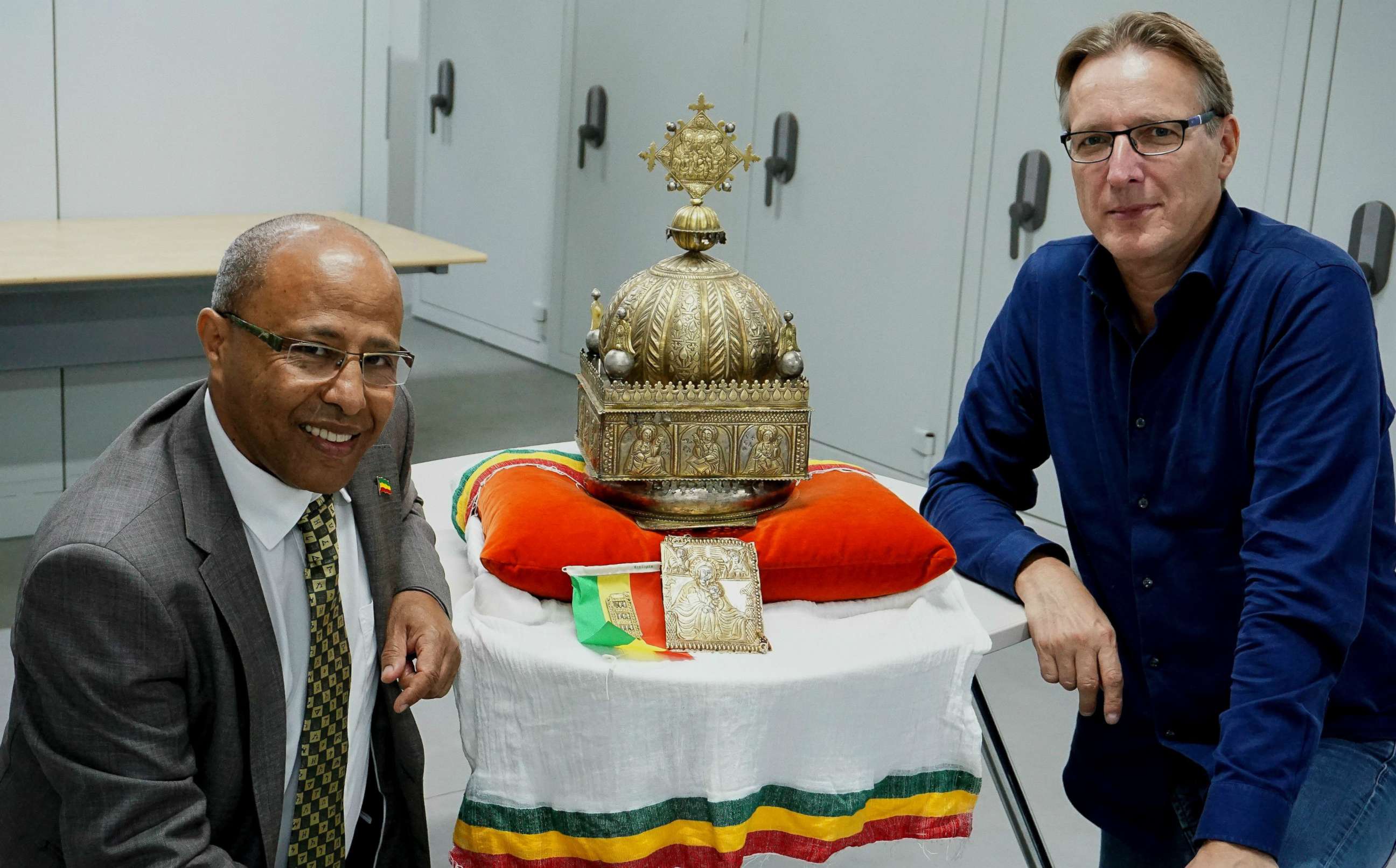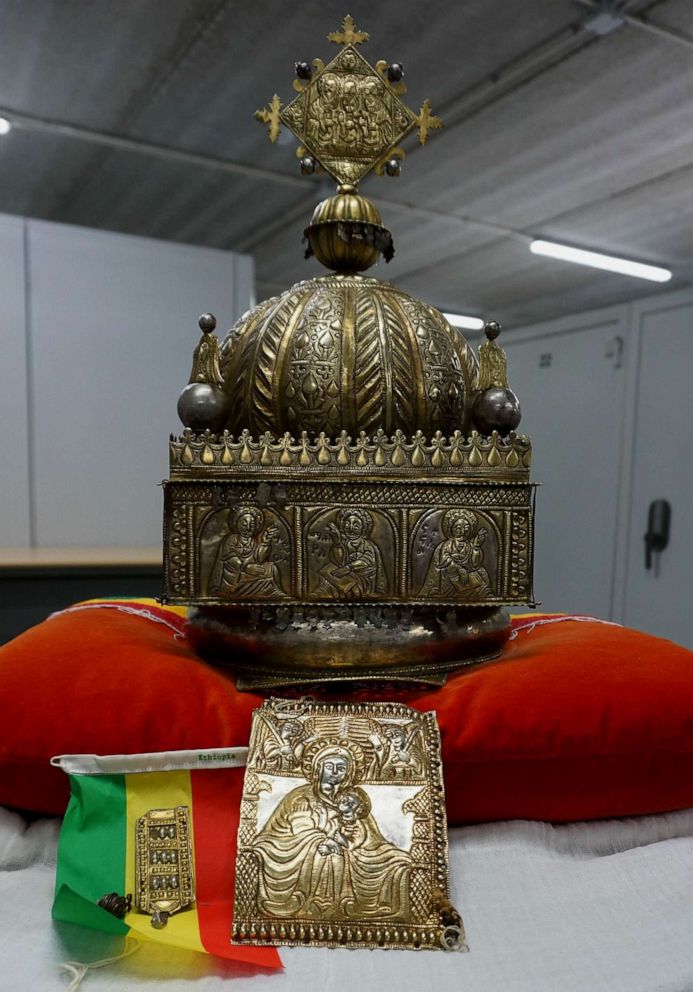Priceless 18th century crown will return home after 21 years abroad
A former Ethiopian refugee kept the piece in his Netherlands flat for decades.
An 18th century Ethiopian crown will return to Addis Ababa after more than two decades abroad, hidden away in a Dutch apartment.
For 21 years, former Ethiopian refugee Sirak Afsaw guarded the piece at his home in Rotterdam, Netherlands, before enlisting the help of Arthur Brand, a Dutch art detective known as the "Indiana Jones of the art world," to help construct a plan for the crown's safe journey home.
Afsaw, who fled the East African country in 1978 during its repressive Communist regime, discovered the crown in 1998 after an Ethiopian guest left a suitcase behind in his apartment.
"I looked into the suitcase and saw something really amazing and I thought 'this is not right'," he told AFP. "This has been stolen. This should not be here. This belongs to Ethiopia."
The gilded copper crown features depictions of the Holy Trinity and Christ’s disciples. Jacopo Gnisci, an Oxford University researcher, told AFP the piece was likely gifted to an Ethiopian church in the northern region of the country by a warlord named Welde Sellase. While an inscription on the crown says 1633-34, Gnisci said it is more probable it was created a hundred years later. He told AFP, the crown is "of priceless symbolic value."

The Ethiopian government launched an investigation into the disappearance of the crown after it went missing in the early 1990s from a church in Cheleqot, a village 75 miles from the border of Eritrea.
The last time it was seen publicly was in a 1993 photograph, on the head of a priest.
Realizing the crown’s enormous worth, Afsaw decided to hold onto it until he knew it could be returned unscathed to Ethiopia.
"I knew if I gave it back, it would just disappear again" he said.
Afsaw said he felt conflicted when it came to holding onto the crown.
Guarding it in his home, Afsaw told the BBC, "you end up in such a suffocating situation, not knowing who to tell or what to do or to hand over."

"I had fire alarms all over my house, eight or something like that," he said.
With the election of Ethiopian Prime Minister Abiy Ahmed in 2018 and Brand's influence, Afsaw felt enough had changed in his home country that the piece could safely return home.
"I explained to him, look, either the crown will disappear or you [will], if you continue like this," Brand told the BBC.
The pair contacted the Dutch police, who placed the piece in a secure facility. After art experts confirmed the crown’s authenticity, Afsaw and Brand decided to publicly announce its existence.
The crown will continue to stay under heavy security until the Dutch and Ethiopian governments figure out how to return it safely to Addis Ababa.




